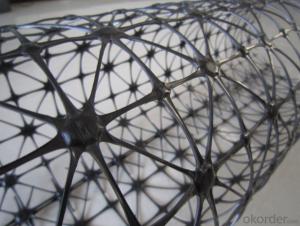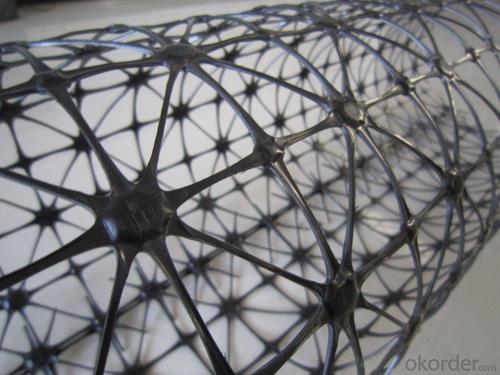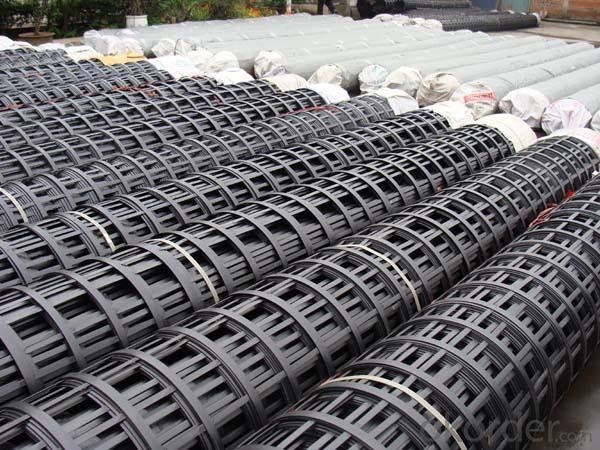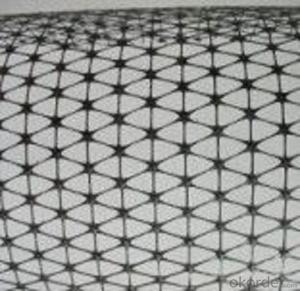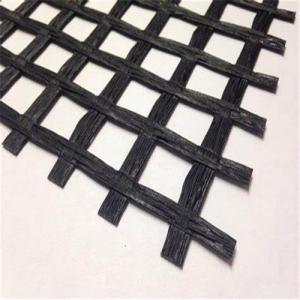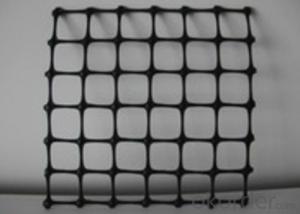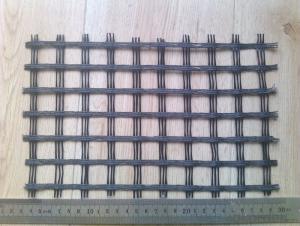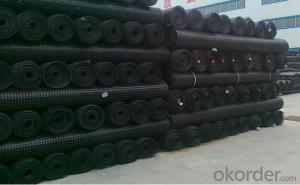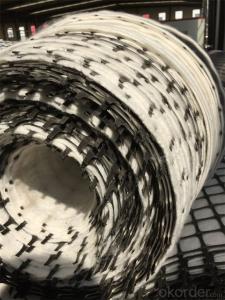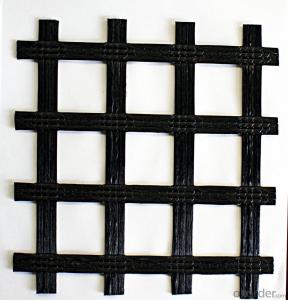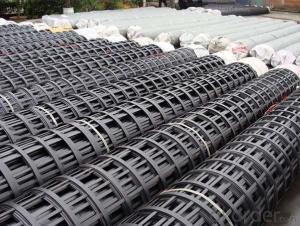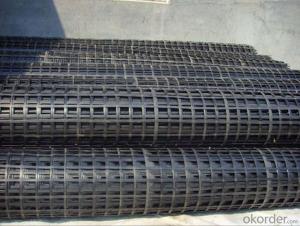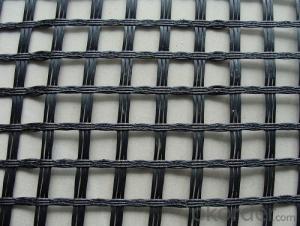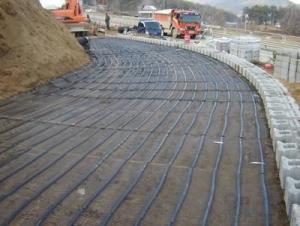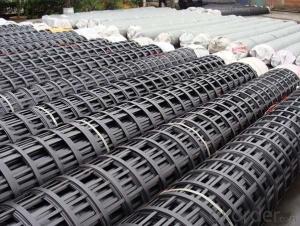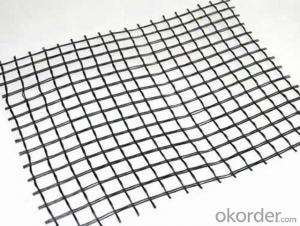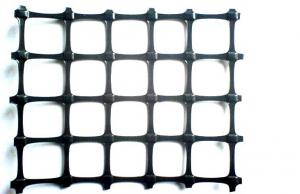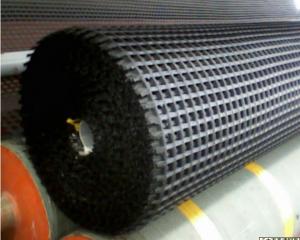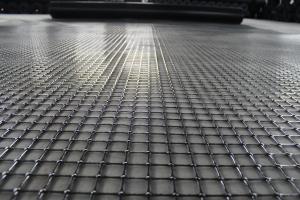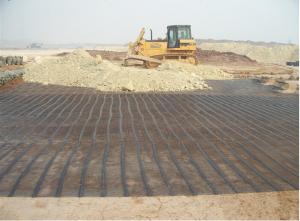PVC Coated Polyester/PP/Fiberglass Geogrids Noise Reduction
- Loading Port:
- China main port
- Payment Terms:
- TT OR LC
- Min Order Qty:
- 5000 m²
- Supply Capability:
- 1000000 m²/month
OKorder Service Pledge
OKorder Financial Service
You Might Also Like
Introduction of Fiberglass Geogrid:
Fiberglass geogrid is based on fiberglass woven cloth coated with modified bitumen or PVC, it was developed to address the problem of pavement cracking on highways, roads and runways, driven by a need to reduce cost for infrastructure maintenance and repair.
It is characterized by high tensile strength in axial and lateral directions, low stretch rate, alkali-resistance, low temperature- resistance, as well as convenience in construction and low price. It can be used on pitch pavement to prevent cracks and prolong pavement service life. It also can be used as a basal reinforcement material for hillsides, reservoirs, harbors, ports, water channels, seawalls, etc.
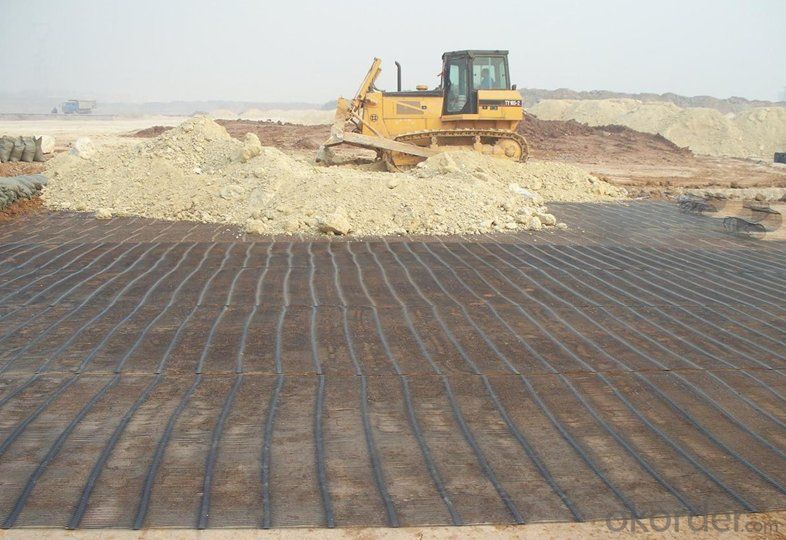
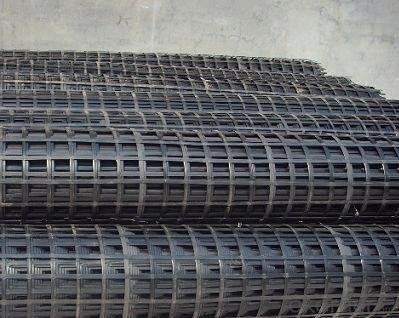
Features:
1.Intensity of vertically and horizontally from 20 KN/M to 150 KN/M
2.Low breaking elongation, not bigger than 3%
3.Suitable for each kind of soil environment
4.For treatment on surface, the rib suppresses the rough pattern, strengthens the grill surface the rough degree, enhances the GSZ steel plastic complex geogrid in the soil body friction factor.
5.It has more superior breadth, up to 2- 6 m, reducing construction joining, enhances the work efficiency.
6.High intensity, low creep and distorting
7.Resistant to erosion, longer life.
8.Easy and convenient to install, short period and low cost- saving. It can save project cost by 10%- 50%.
FAQ:
Q: Can you accept small trial order?
A: Yes, we accept small trial orders at reasonable charge.
Q:May I get one sample for checking out the quality? How much?
A: Yes, we supply sample free of charge, and the freight will be on buyer’s account, which is refundable when order confirmed.
Q: What is your MOQ?
A: Normally, 1000 m2 per order.
Q: What is your delivery time? Can we have it sooner?
A: 2 days for sample, 3-5 days against 1x40HQ
Q: What is your payment terms?
A: T/T, Paypal (3% surcharge), Western Union or 30% deposit 70% L/C.
- Q: What are the advantages of using geogrids?
- Geogrids offer several advantages in various applications. Firstly, they provide enhanced stability and load-bearing capacity to soil structures, reinforcing them and preventing slope erosion or ground movement. Secondly, geogrids are highly durable and resistant to environmental factors such as UV radiation and chemical degradation, ensuring long-term performance. Additionally, they can be easily installed, reducing construction time and costs. Geogrids also facilitate drainage by allowing water to flow through their apertures, preventing water buildup and maintaining soil integrity. Lastly, they are versatile and can be used in a wide range of applications, including road and railway construction, retaining walls, and landfill lining, making them a reliable solution for geotechnical engineering projects.
- Q: What are the limitations of geogrids?
- Geogrids have a few limitations. Firstly, they are not suitable for all types of soil and terrain conditions. They are most effective in soils with good particle interlock and cohesion. Secondly, geogrids are not effective in situations where there is high water flow or erosion potential as they do not provide sufficient protection against these forces. Additionally, geogrids may have limited strength in certain applications, such as heavy load-bearing scenarios, and may require additional reinforcement. Lastly, the installation and maintenance of geogrids can be complex and costly, requiring skilled labor and regular inspections to ensure proper functioning.
- Q: Are geogrids suitable for use in vegetated slopes?
- Yes, geogrids are suitable for use in vegetated slopes. They provide reinforcement and stability to the soil, preventing erosion and slope failure. The geogrids can be integrated with vegetation, allowing plants to grow through the grid and establish a strong root system, further enhancing slope stability.
- Q: Can geogrids be used in reinforcement of rock slopes?
- Yes, geogrids can be used in the reinforcement of rock slopes. Geogrids are commonly used to stabilize and strengthen slopes by improving the stability and increasing the bearing capacity of the soil or rock. They are effective in preventing slope failures and erosion, and can be installed in combination with other methods such as rock bolts or shotcrete to provide additional support and reinforcement to the rock slope.
- Q: How do geogrids help in reducing the risk of soil erosion?
- Geogrids help in reducing the risk of soil erosion by providing reinforcement to the soil. They are made up of high-strength materials and are designed to be placed within the soil, creating a stable structure. This reinforcement improves the soil's stability, preventing it from being washed away by water or blown away by wind. Geogrids also help to distribute the applied loads more evenly, reducing the potential for localized soil erosion.
- Q: How many square meters of geogrid?
- Geogrid is a kind of main geosynthetics, which has unique properties and effects compared with other geosynthetics. Geogrid is often used as reinforcement of reinforced soil structure or composite material. The geogrid is composed of plastic geogrid, steel plastic geogrid, fiberglass geogrid and polyester warp knitted polyester geogrid
- Q: What are some common standards and specifications for geogrids?
- Some common standards and specifications for geogrids include ASTM D6637, which provides testing methods for determining the tensile properties of geogrids, and ASTM D5262, which specifies the requirements for geogrids used in soil stabilization applications. Additionally, ISO 10318 and EN 15381 are international standards that outline the design, testing, and performance characteristics of geogrids for various applications. These standards ensure that geogrids meet specific criteria for strength, durability, and performance, allowing engineers and designers to choose the appropriate geogrid for their specific project requirements.
- Q: Building houses and roads require pipes and geotextile, grille?
- One way tensile plastic geogrid: Polyethylene one-way tensile geogrid is made of high density polyethylene (HDPE) as raw material, through plasticizing extrusion plate, punching, heating, stretching
- Q: Can geogrids be used in landfill construction?
- Yes, geogrids can be used in landfill construction. Geogrids are commonly used as reinforcement materials in landfill engineering to improve stability, increase load-bearing capacity, and prevent soil erosion. They are effective in enhancing the overall performance and longevity of landfills.
- Q: What are the factors to consider in selecting a geogrid for a specific application?
- When selecting a geogrid for a specific application, several factors need to be considered. These include the type of soil, the expected load and traffic conditions, the required strength and stiffness, the installation method, and the environmental conditions. Additionally, factors such as cost-effectiveness, availability, and compatibility with other materials should also be taken into account. By evaluating these factors, one can choose the most suitable geogrid that will provide the necessary reinforcement and longevity for the intended application.
Send your message to us
PVC Coated Polyester/PP/Fiberglass Geogrids Noise Reduction
- Loading Port:
- China main port
- Payment Terms:
- TT OR LC
- Min Order Qty:
- 5000 m²
- Supply Capability:
- 1000000 m²/month
OKorder Service Pledge
OKorder Financial Service
Similar products
Hot products
Hot Searches
Related keywords
